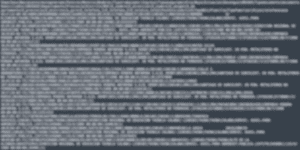Constella’s data scientists have discovered that 30.3% of the world’s sanitary conditions are unrecognized by one of the most powerful artificial intelligence platforms, Google TensorFlow. But what does this mean?
Our team is always looking for new ways to use public data and AI to measure more accurately the global impact of social issues. Focused on sanitation, our analysts started modeling an AI-powered image recognition analysis of toilets, for a more exact number of people impacted by unsafe sanitation conditions on a global scale. As sanitation data evolves and updates, we believe this methodology will enable more efficient tracking of this issue, and we encourage our data science team to experiment with open-source data to uncover insights.
Our team used data from gapminder.org’s Dollarstreet, a project dedicated to evolving perceptions of inequality with a website of images of living conditions and belongings from real families around the world, organized by income levels.
971 Dollarstreet-images of toilets were processed by our team using Google’s TensorFlow framework, to test the ability of the algorithm to identify toilets according to income groups. To obtain a clearer understanding of the global population impacted by unsafe sanitation data was then pivoted into Gapminder tools.
Using public data for deeper insights into social issues
Our data scientists discovered a direct correlation between Google’s AI accuracy and family income, as the AI struggled to identify toilets from low-income brackets:
30.3% (2.22 billion people) of the world population has a toilet unrecognized by Google’s AI-algorithms
As the data science team went further, collating recognized (114) and unrecognized (112) images by the algorithm and plotted results by income levels, it became clear the poorest families in the data did not have access to a distinguishable toilet:
Toilets of families below an income of $122 were not recognized by TensorFlow, representing 30.3% (2.22 billon people) of the world total population. Toilets of families below an income of $245 had a 50% chance of being recognized. These families represent a 47.8% (3.42 billion people) of the global population.
By extrapolating these figures, we have learned over 30% of the world’s population do not have access to basic sanitation facilities. Our data and insights are aligned to current UN data: worldtoiletday.info
Learn more
Constella supports World Toilet Day, a United Nations initiative focused on inspiring action to tackle the global sanitation crisis and ensure all people have a safe toilet by 2030.
Constella believes sanitation is a human right. Access to safe and clean sanitation means families around the world can be healthier and happier with improved quality of life. For more information and to support World Toilet Day, visit worldtoiletday.info.
Written by Clarissa Watson. Originally published on Nov. 22, 2018.
Interested in our work? Please contact us at info@constellaintelligence.com. To learn more about Constella, subscribe to our newsletter below.



